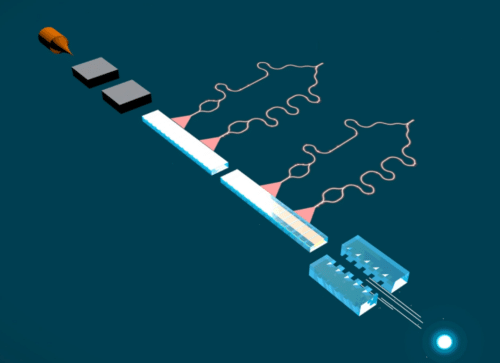Stanford engineers have made a breakthrough that could pave the way for particle accelerators to become more accessible in various fields, including science, medicine, and industry.

Stanford researchers are making significant strides in developing a miniature electron accelerator using “accelerator-on-a-chip” technology, which holds promise for many physics, medicine, and industry applications. The team has successfully demonstrated a silicon dielectric laser accelerator (DLA) that can both accelerate and focus electrons, creating a high-energy electron beam.
Traditional particle accelerators, such as the 2-mile-long linear accelerator at SLAC National Accelerator Laboratory, have been instrumental in advancing particle physics. However, they are expensive and require substantial space. The Stanford team, led by Payton Broaddus, aims to develop a tiny linear accelerator that could rival the capabilities of these larger machines at a fraction of the cost. This miniaturized accelerator could have revolutionary applications in medicine, enabling precise electron beam targeting for tumor treatment.

Advancements in nano-scale fabrication and laser technology have made this miniaturization possible. Unlike traditional copper accelerators, which can overheat, the Stanford team’s silicon and glass structures can handle higher energy pulses from lasers without heating up. This allows for more powerful acceleration in a smaller device. The team’s prototype accelerator has achieved acceleration rates comparable to conventional accelerators, with potential for even higher rates.
The recent breakthrough involves steering electrons at the nanoscale using a shaped laser pulse in a silicon structure with a sub-micron channel. This technique allows for controlled acceleration and focusing of the electrons, preventing them from veering off course. The next challenge is to achieve three-dimensional electron confinement, which is necessary for longer accelerators and more significant energy gains.
Collaboration with a sister research group at Friedrich Alexander University in Germany is underway, with plans for a “relay race” of accelerators. This relay would involve an initial kick of low-energy electrons by the FAU device, followed by further acceleration in the Stanford device, and finally, a glass accelerator for even higher energy gains. While there is still much work to be done, the team is optimistic about the potential of their tiny accelerator to revolutionize high-energy physics research and open up new possibilities in medical and industrial applications.






